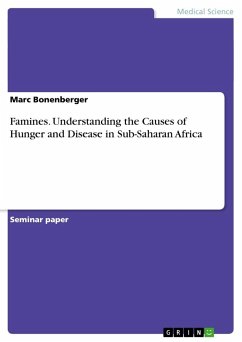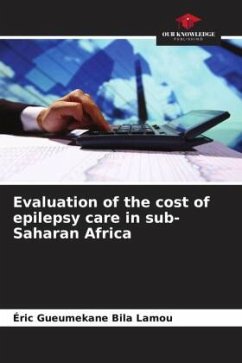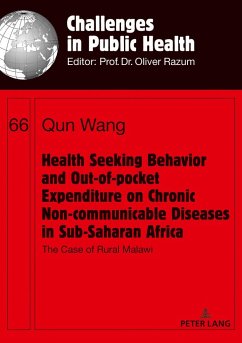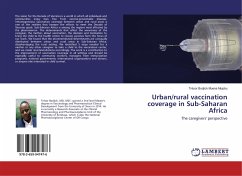
Famines. Understanding the Causes of Hunger and Disease in Sub-Saharan Africa
Versandkostenfrei!
Versandfertig in 1-2 Wochen
17,95 €
inkl. MwSt.

PAYBACK Punkte
0 °P sammeln!
Seminar paper from the year 2009 in the subject Medicine - Epidemiology, grade: 1,0, University of Basel (Centre for African Studies Basel), course: Seminar: Current Ecological and Health Issues, language: English, abstract: Despite the fact that there is currently enough food in the world for all, the poorest billion of the world's population is suffering from starvation and hunger-related diseases. It was estimated that in the 20th century between 70 and 80 million people died in famines worldwide of which 4 million famine deaths occurred in Africa. Even though the last two decades saw a red...
Seminar paper from the year 2009 in the subject Medicine - Epidemiology, grade: 1,0, University of Basel (Centre for African Studies Basel), course: Seminar: Current Ecological and Health Issues, language: English, abstract: Despite the fact that there is currently enough food in the world for all, the poorest billion of the world's population is suffering from starvation and hunger-related diseases. It was estimated that in the 20th century between 70 and 80 million people died in famines worldwide of which 4 million famine deaths occurred in Africa. Even though the last two decades saw a reduction in famines in other parts of the world, on the African continent it is still a sad reality. There are numerous factors causing a famine, most importantly natural disasters, policy failures, conflicts and wars, production and market failures. In most cases it is not a single factor triggering a famine, but it is rather the result of interlocking processes.The overall research question of this paper is: "How are famines caused, what effects do they have on human health, and what are the chances to reduce poverty and hunger in Africa?" This research question is answered in three chapters. The first chapter is an attempt to explain the causes of famines by using the Panarchy Framework as developed by Gunderson and Holling in 2002. In the second chapter, the relationship between hunger, undernutrition and both communica¬ble and non-communicable diseases is explored. This includes an analysis on how un-dernutrition is measured and which relief practices in emergency situations are usually being applied. In the third chap¬ter the strategies needed to meet the extreme poverty and hunger Millennium Development Goal are explored. As there are a number of threats endangering the achievement of this goal, in a second part of this chapter the main threats are identified to deliberate about whether or not this goal may be achieved in Africa.












